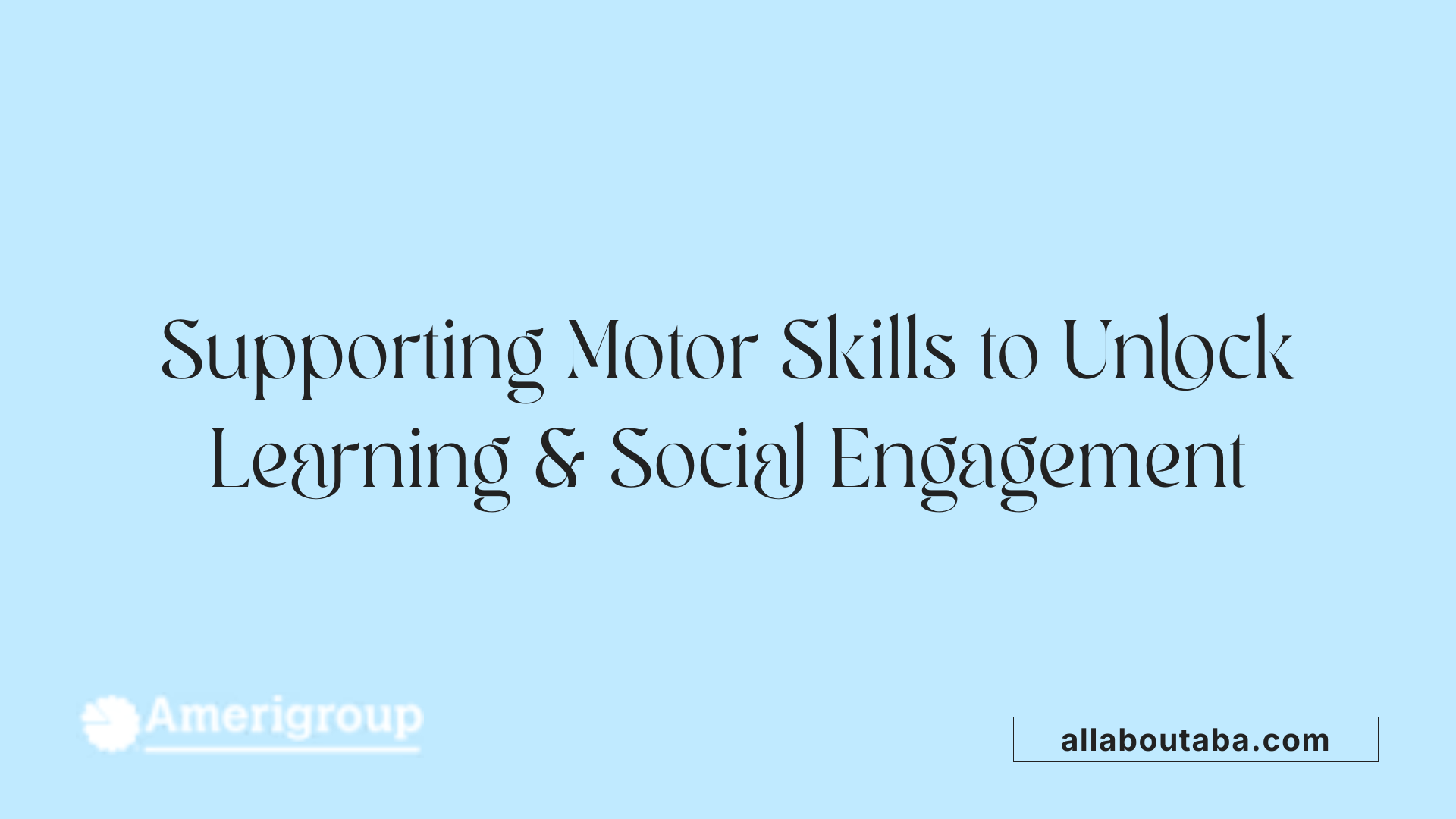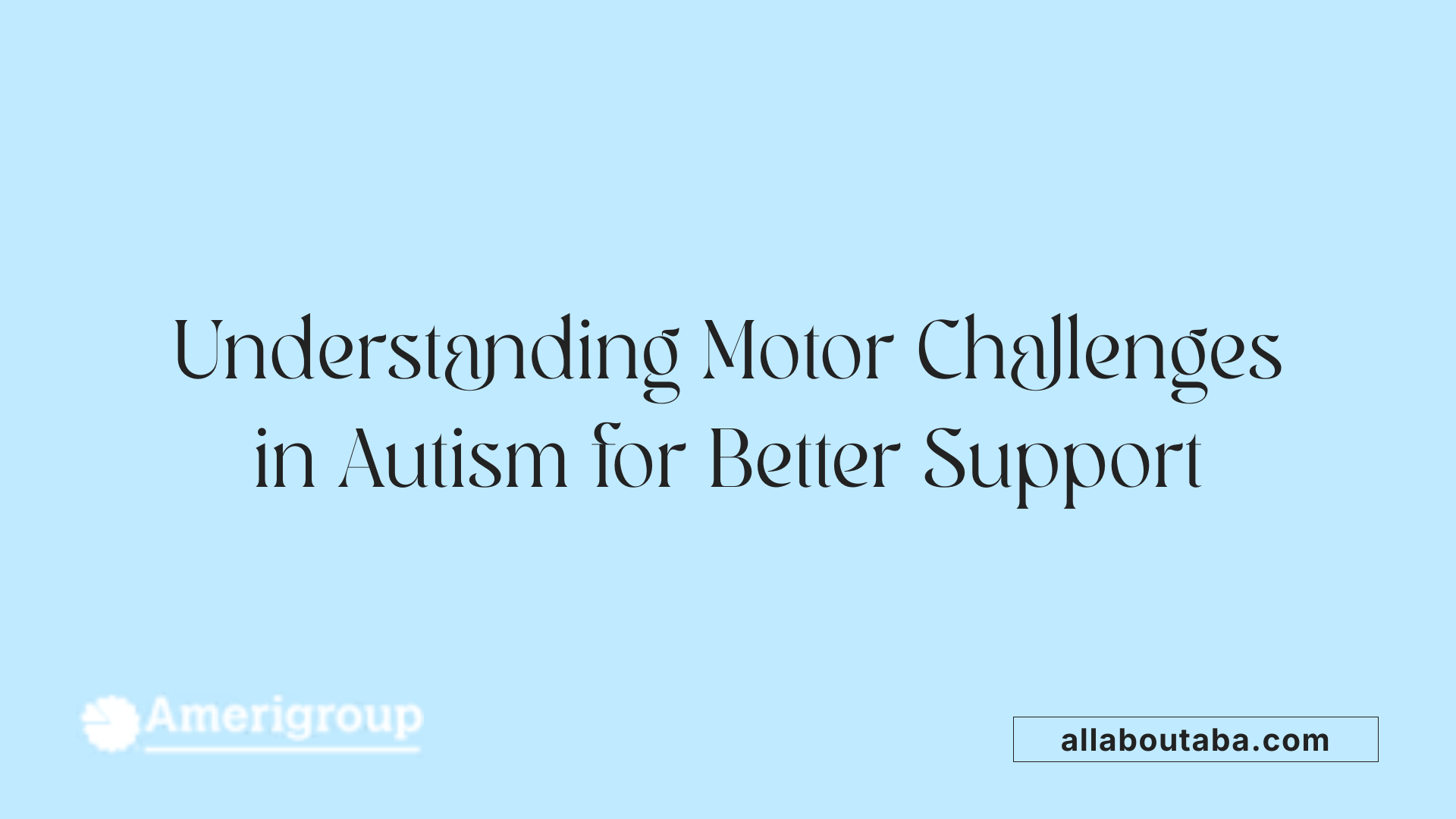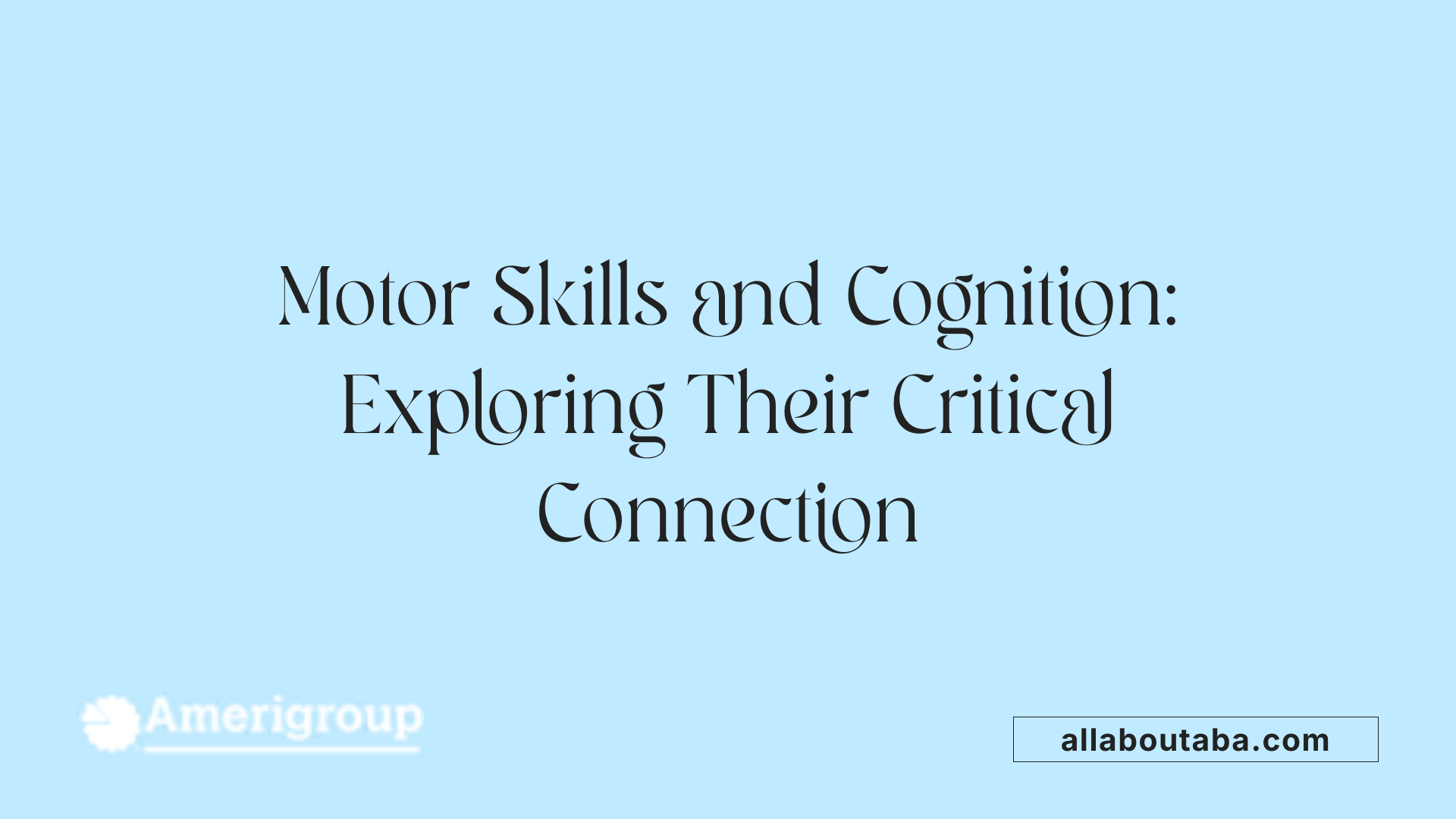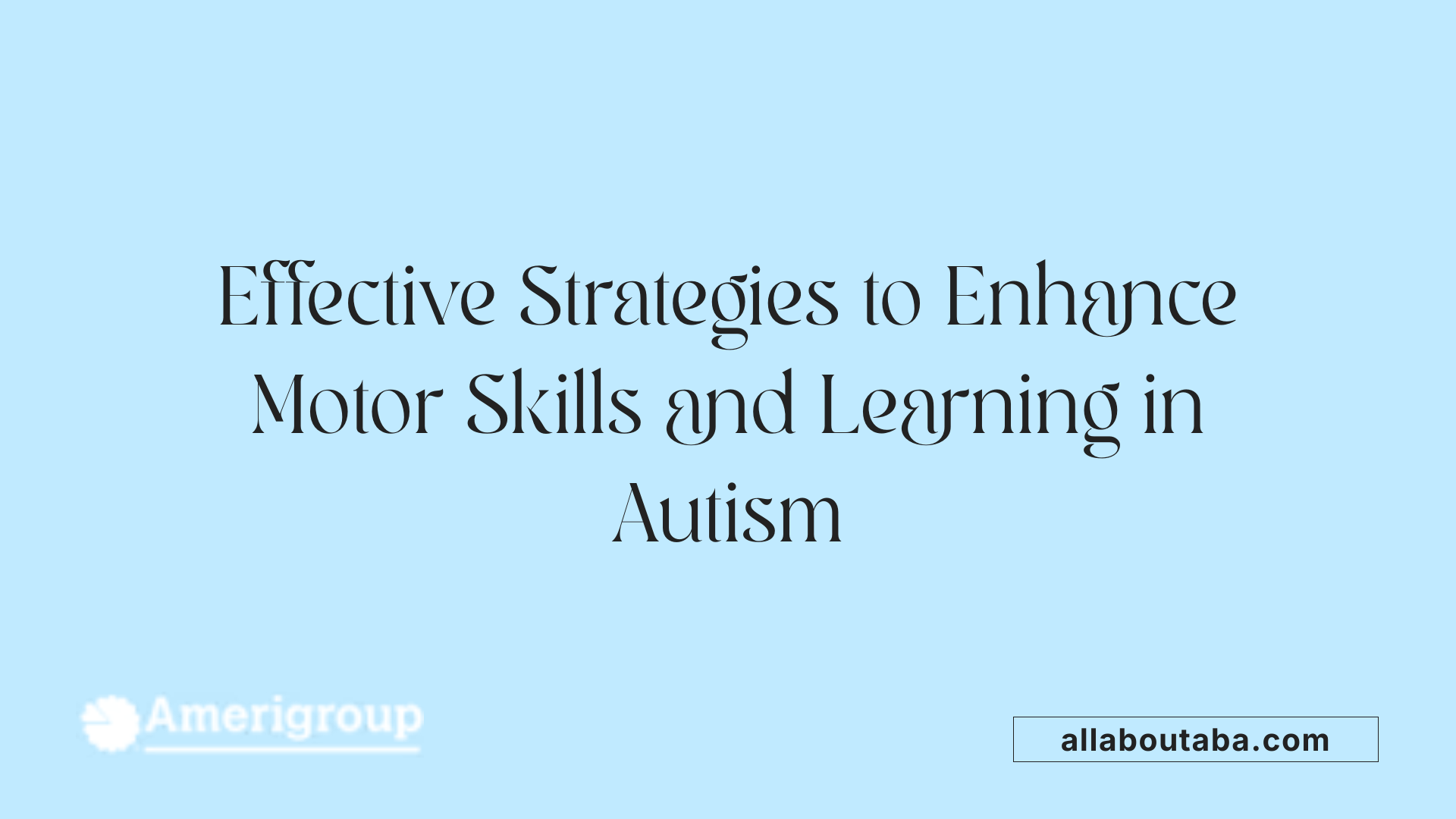Introduction to Motor Skills and Learning in Autism
Autism spectrum disorder (ASD) is characterized by a range of developmental differences, notably in social, communicative, and behavioral domains. Among these, motor skill impairments—both gross and fine—are frequently observed early in life and have significant implications for learning and social development. This article explores the crucial relationship between motor development and learning outcomes in individuals with autism, highlighting scientific research findings, common motor challenges, and effective strategies for intervention.
Early Motor Development Delays in Autism

How does motor development impact learning outcomes and social adaptation in autism?
Motor development is fundamental to a child's overall growth, especially in children with autism spectrum disorder (ASD). Early delays in reaching motor milestones, such as crawling and walking, are commonly observed in autistic children between the ages of 14 and 24 months.
These delays are not just about movement; they influence social participation and cognitive development. Children with weaker gross and fine motor skills tend to engage less in peer activities, which can hinder their social skills and adaptive behavior.
Research shows a strong link between motor skills and executive functions like attention, working memory, and inhibitory control. These cognitive processes are vital for self-regulation and academic success.
When motor skills, especially fine motor abilities involved in activities like grasping or writing, improve through targeted therapy and practice, children with ASD often demonstrate better social adaptability. This includes increased participation in social interactions and better problem-solving.
Since motor and cognitive functions develop in tandem and share brain regions, enhancing motor skills can also positively influence cognitive growth. Approaches like occupational therapy, adapted sports, and movement exercises help strengthen these abilities.
Overall, focusing on motor skill development is crucial for helping children with autism reach their full potential in learning and social engagement. Early interventions that emphasize motor milestones can lead to more meaningful improvements across multiple areas of development.
The Scientific Link Between Motor Skills and Cognition
What scientific research exists on the connection between motor skills, cognition, and learning in autism?
Research shows that children with autism often experience delays and impairments in both motor and cognitive development. Numerous studies have established a strong link between motor skills—particularly fine motor abilities—and cognitive functions like memory, attention, and self-control, also known as executive functions.
For example, research from Oregon State College of Health involving 172 children aged 4 to 7 from Taiwan and the US found significant correlations between motor skills and executive functions such as working memory and inhibition control. Notably, fine motor skills demonstrated a stronger relationship with cognitive performance than gross motor skills.
Early motor skills play a critical role in cognitive growth, as they are foundational for developing skills such as problem-solving, planning, and social interaction. When motor development is delayed, it can hinder a child's ability to engage in learning activities and social participation, affecting overall development.
Brain imaging studies reveal that regions involved in both motor and cognitive processes—such as the cerebellum and basal ganglia—often show structural and functional differences in children with autism. The cerebellum, traditionally seen as coordinating movement, is also involved in language and cognitive functions, while the basal ganglia play a role in movement regulation and learning.
Differences in how these brain regions connect and activate contribute to the motor and cognitive challenges observed in ASD. For instance, weakened connections between sensory and motor areas have been documented, impacting coordination and learning.
Importantly, these findings suggest that improving motor skills through targeted interventions may also enhance cognitive and social abilities. Therapies like physical and occupational training not only foster better movement but may lead to gains in attention, working memory, and inhibitory control.
Integrating motor development assessments and programs early in a child's life is therefore vital. Such strategies can support overall learning, behavior regulation, and social participation, ultimately promoting better developmental outcomes in children with autism.
Common Motor Difficulties in Autism and Their Consequences

What are the common motor difficulties in autism and their implications for learning and behavior?
Children with autism often face a range of motor challenges that can affect their development and daily life. These include delays in both gross motor skills, such as walking, jumping, and coordination, and fine motor skills like grasping, writing, and hand-eye coordination. Some children may struggle with motor planning—the ability to conceive, organize, and execute movement sequences—which impacts activities like dressing, using utensils, or drawing.
Coordination problems, poor balance, and atypical movement patterns are also common. These motor difficulties usually start early, often detectable from infancy, with infants later diagnosed with autism exhibiting less arm movement or insufficient muscle tone. As children grow, these motor impairments can hinder participation in everyday activities, including self-care tasks (dressing, grooming), sports, and social play.
The impact extends beyond physical limitations. Motor skills are strongly linked to social engagement and communication. Difficulties in movement can limit peer interactions, reduce opportunities for socialization, and affect confidence and self-esteem. Research shows that motor deficits independently influence social skills and behavioral patterns, even after accounting for cognitive abilities or sensory issues.
Importantly, early motor delays may serve as important markers for autism. Recognizing these signs enables earlier diagnosis and targeted intervention, which can improve developmental trajectories. Addressing motor challenges through therapies like physical and occupational therapy can enhance participation, decrease frustration-driven behaviors, and support better learning and social outcomes.
This relationship underscores the importance of comprehensive assessment of motor skills in children with autism. Treating motor impairments not only improves physical abilities but also facilitates cognitive, language, and social development—creating better opportunities for children to thrive.
Research Insights on Motor and Executive Functions Development

What is the relationship between motor skills and learning in children with autism?
There is a strong, bidirectional relationship between motor skills and learning in children with autism. Motor development forms the foundation for many cognitive, social, and emotional skills, influencing how children interact with their environment and peers.
Children with autism often face challenges with gross and fine motor skills, such as coordination, balance, and praxis (the ability to conceptualize, plan, and execute movements). These motor difficulties can impede engagement in activities that promote learning, socialization, and participation in daily routines.
Research indicates that delays in motor skills frequently co-occur with speech and cognitive delays. As children grow older, these motor challenges may become more prominent, further affecting their overall development.
Interventions like physical and occupational therapy aim to improve motor proficiency. Enhancing motor skills can also positively impact broader developmental areas, including executive function and social skills.
Early assessment and targeted support are crucial. When early intervention is applied, children with autism are more likely to benefit from improved motor skills, which can lead to better communication, academic achievement, and everyday functioning.
Interventions and Strategies for Motor Skill Enhancement

What strategies can support motor skill development to improve learning in autistic individuals?
Supporting motor skill development in autistic individuals involves a combination of practical interventions and engaging activities. Occupational and physical therapies are foundational, helping children overcome delays in both gross and fine motor skills. These therapies focus on improving coordination, balance, and strength through customized exercises.
Play-based activities that are sensory-rich can significantly enhance motor development. Examples include obstacle courses to build agility, ball games to improve hand-eye coordination, and manipulating textured media like playdough or small objects to boost fine motor skills. Incorporating activities such as yoga or animal mimicking exercises can also promote body awareness and motor planning.
Leveraging neuroplasticity—the brain's ability to reorganize and form new connections—is essential. Repetitive, structured exercises like threading beads, cutting shapes, or practicing dressing skills help strengthen motor pathways. These activities are most effective when introduced early and practiced regularly, fostering steady progress.
Sensory integration techniques further support motor development by improving the nervous system's response to sensory stimuli. Activities such as swinging, deep pressure, and vestibular exercises can calm sensory sensitivities and enhance overall motor coordination.
Finally, approaches like DIR/Floortime, music therapy, and caregiver-led routines make motor practice enjoyable and emotionally motivating. These methods encourage participation across diverse settings, helping children generalize skills into everyday life and boost their social and cognitive development.
Bridging Motor Skills and Successful Development in Autism
Enhancing motor skills in children with autism is a vital component of supporting their overall development, learning, and socialization. Scientific evidence underscores the profound connection between motor proficiency and cognitive functions, emphasizing that early, targeted interventions can foster improved outcomes across multiple domains. By understanding and addressing the motor challenges faced by autistic individuals—through tailored therapies, play, and sensory integration strategies—caregivers and professionals can help unlock greater independence, confidence, and social participation, paving the way for a more inclusive and supportive developmental trajectory.
References
- Motor Skills and Executive Function in Autism
- The relationship between motor development and social ...
- Autistic Children and Motor Skills
- The relationship of motor skills and adaptive behavior ...
- Study Links Motor and Cognitive Skills in Children with ...
- Autism affects motor skills, study indicates - The Source - WashU
- Motor difficulties in autism, explained
- Motor Skill in Autism Spectrum Disorders: A Subcortical View
- Motor problems in autism: Co-occurrence or feature? - PMC







